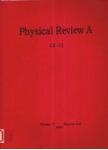版权所有:内蒙古大学图书馆 技术提供:维普资讯• 智图
内蒙古自治区呼和浩特市赛罕区大学西街235号 邮编: 010021

作者机构:Center for Quantum Information and Quantum Control Department of Physics and Department of Electrical & Computer Engineering University of Toronto Toronto Ontario Canada M5S 3G4
出 版 物:《Physical Review A》 (物理学评论A辑:原子、分子和光学物理学)
年 卷 期:2005年第72卷第1期
页 面:012326-012326页
核心收录:
学科分类:070207[理学-光学] 07[理学] 08[工学] 0803[工学-光学工程] 0702[理学-物理学]
基 金:Seventh Framework Programme, FP7, (248095) Seventh Framework Programme, FP7 National Science Foundation, NSF, (0086038) National Science Foundation, NSF
主 题:UNCONDITIONAL SECURITY CRYPTOGRAPHY PROOF
摘 要:Decoy states have recently been proposed as a useful method for substantially improving the performance of quantum key distribution (QKD). Here, we present a general theory of the decoy state protocol based on only two decoy states and one signal state. We perform optimization on the choice of intensities of the two decoy states and the signal state. Our result shows that a decoy state protocol with only two types of decoy states—the vacuum and a weak decoy state—asymptotically approaches the theoretical limit of the most general type of decoy state protocol (with an infinite number of decoy states). We also present a one-decoy-state protocol. Moreover, we provide estimations on the effects of statistical fluctuations and suggest that, even for long-distance (larger than 100 km) QKD, our two-decoy-state protocol can be implemented with only a few hours of experimental data. In conclusion, decoy state quantum key distribution is highly practical.